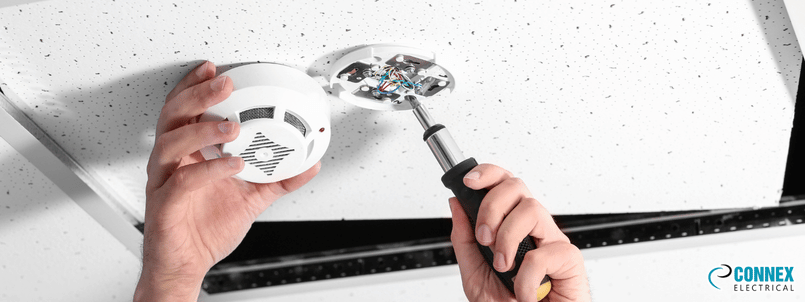Photoelectric smoke alarms are essential for early detection of smoldering fires, often caused by smoking materials or electrical malfunctions. These alarms give occupants extra time to evacuate safely, particularly in residential settings where quick alerts can save lives.
In this guide, learn how photoelectric alarms work, their key advantages, and get expert tips for installing and maintaining them in your home.
What Are Photoelectric Smoke Alarms?
Photoelectric smoke alarms use a light-sensitive sensor to detect smoke. When smoke enters the optical chamber, it disrupts a beam of light, causing it to scatter. When the light hits the sensor, the alarm sounds, warning you of potential fire.
Why Choose Photoelectric Smoke Alarms?
Photoelectric smoke alarms are specifically effective in detecting slow-burning fires that produce smoke before flames, making them ideal for most households. Below are the top benefits of installing these alarms:
1. Faster Detection of Smoldering Fires
Photoelectric alarms respond quickly to slow, smoldering fires that can burn for hours and produce heavy smoke, such as those from cigarettes or overheated wiring.
2. Fewer False Alarms
These alarms are less sensitive to cooking smoke and steam, so they’re less likely to trigger unnecessarily, making them ideal for installation near kitchens and bathrooms.
3. Vital Early Warnings for Safe Evacuation
By providing crucial extra minutes to evacuate safely, photoelectric alarms are especially beneficial for nighttime protection when response times may be slower.
Key Features to Look for in Photoelectric Smoke Alarms
When choosing a photoelectric smoke alarm, consider the following features to enhance functionality and convenience:
- Certification: Look for alarms certified by recognized standards like UL (Underwriters Laboratories) or compliant with local fire safety codes.
- Hush Button: A button to temporarily silence false alarms from non-fire events, like cooking smoke.
- Interconnectivity: Alarms that can connect with other units in your home allow simultaneous alerts throughout the house.
- Long-Life Batteries: Models with 10-year sealed batteries offer hassle-free protection without frequent replacements.
- Test Button: An easily accessible button to test alarm functionality monthly.
Where to Install Photoelectric Smoke Alarms
Proper installation is crucial for optimal performance. Follow these guidelines to ensure effective placement:
Bedrooms and Sleeping Areas: Install alarms in every bedroom and outside each sleeping area.
Every Level of Your Home: Place alarms on each floor, including basements and attics.
Avoid Corners and Dead Air Spaces: Install alarms at least 4 inches from walls if mounted on the ceiling, or 4-12 inches below the ceiling if mounted on walls.
Away from Drafts: Avoid placing alarms near vents, fans, or windows, as air flow can divert smoke away from the sensors.
Tips for Installing and Maintaining Photoelectric Smoke Alarms
To keep your photoelectric smoke alarms functioning optimally, follow these installation and maintenance tips:
Installation Tips
- Use the Right Locations: Install alarms in every sleeping area and each level of your home.
- Avoid Dead Air Zones: Place alarms at recommended distances from walls and corners.
- Securely Attach to Ceilings or Walls: Follow manufacturer instructions for proper mounting.
Maintenance Tips
- Monthly Testing: Press the test button monthly to ensure your alarms are working properly.
- Keep Them Clean: Dust and debris can impair performance. Gently vacuum the outside of each unit every six months.
- Replace Batteries Annually: For non-sealed units, replace batteries yearly. For sealed 10-year alarms, replace the unit when the battery life ends.
- Replace Every 10 Years: Regardless of condition, replace all smoke alarms every 10 years to ensure effectiveness.
FAQs
Q1: Are Photoelectric Alarms Suitable for Kitchens?
Q2: How Often Should I Test My Smoke Alarms?
Q3: Do I Still Need Ionization Alarms?
Conclusion
Installing and maintaining photoelectric smoke alarms is a crucial step in home fire safety. These alarms provide early detection of smoldering fires, helping protect lives and property. Ensure you install them in recommended areas, test them regularly, and replace them as needed.
For expert assistance with installation or maintenance, contact Connex Electrical to help safeguard your home with reliable smoke alarm solutions.

